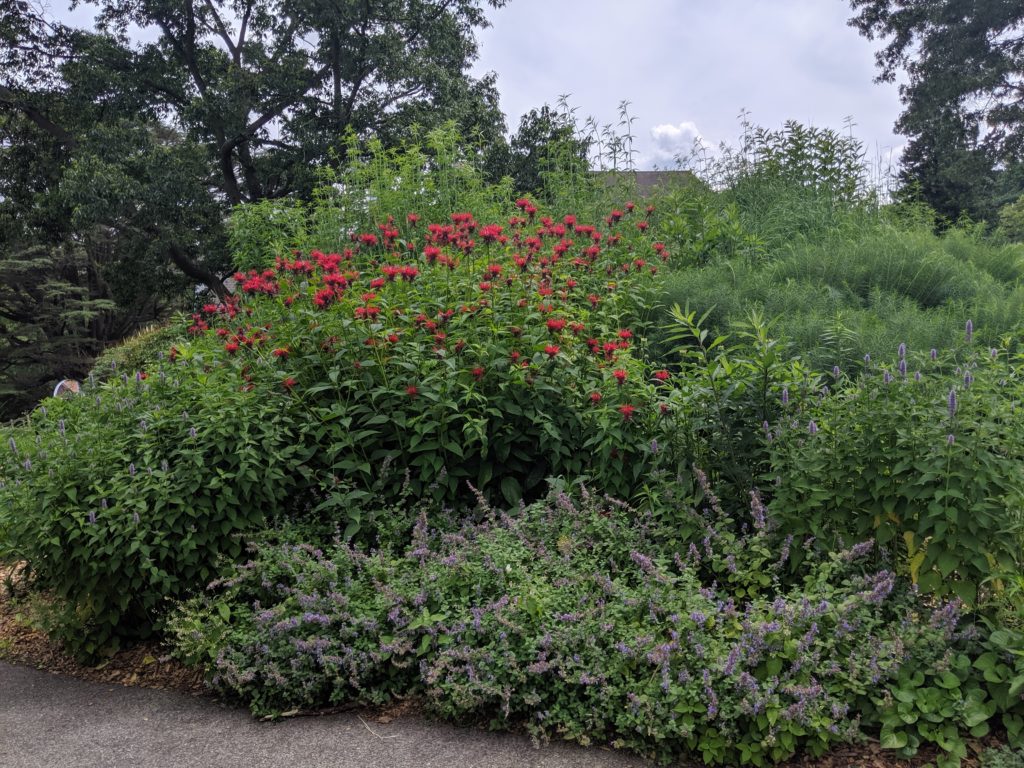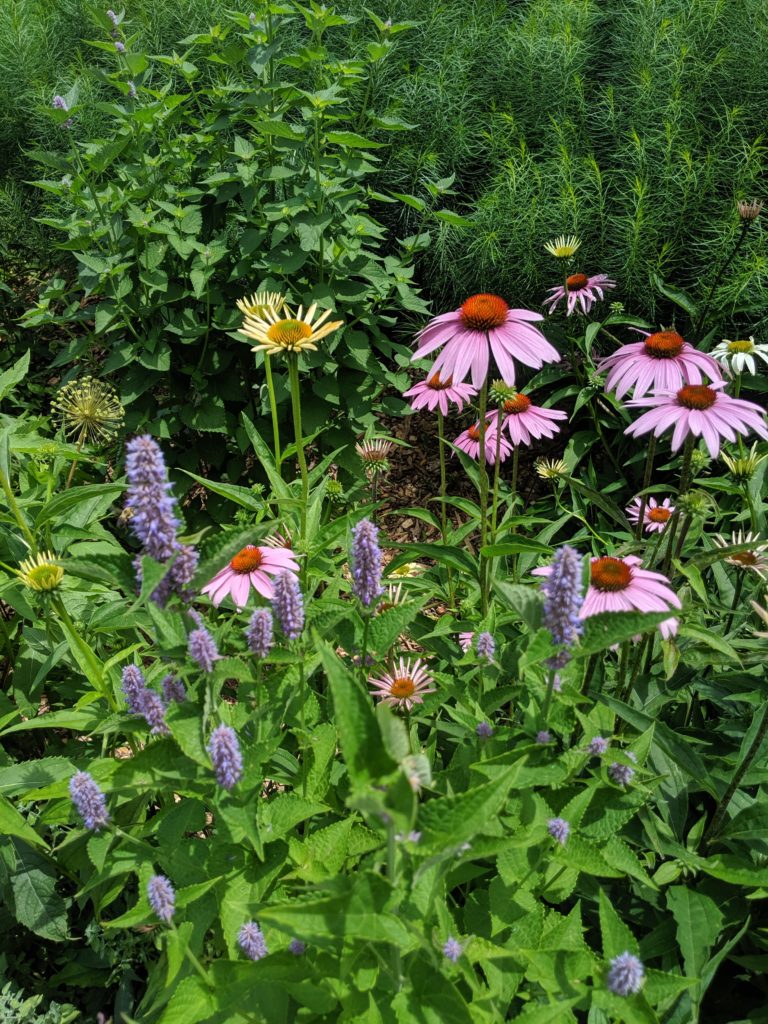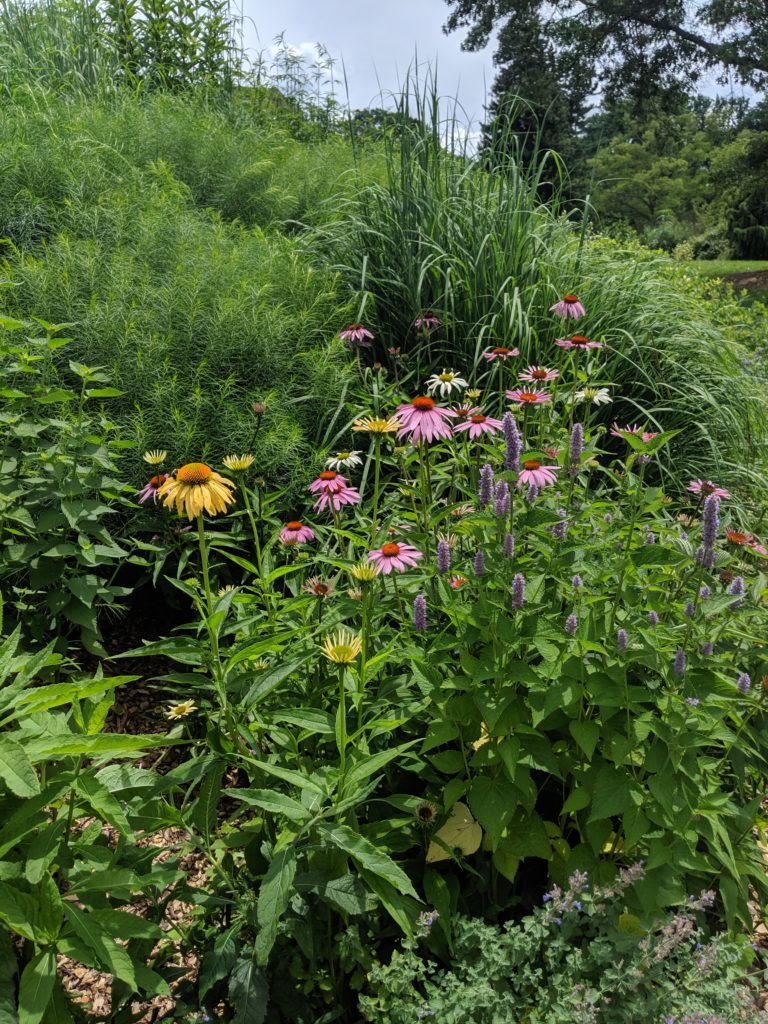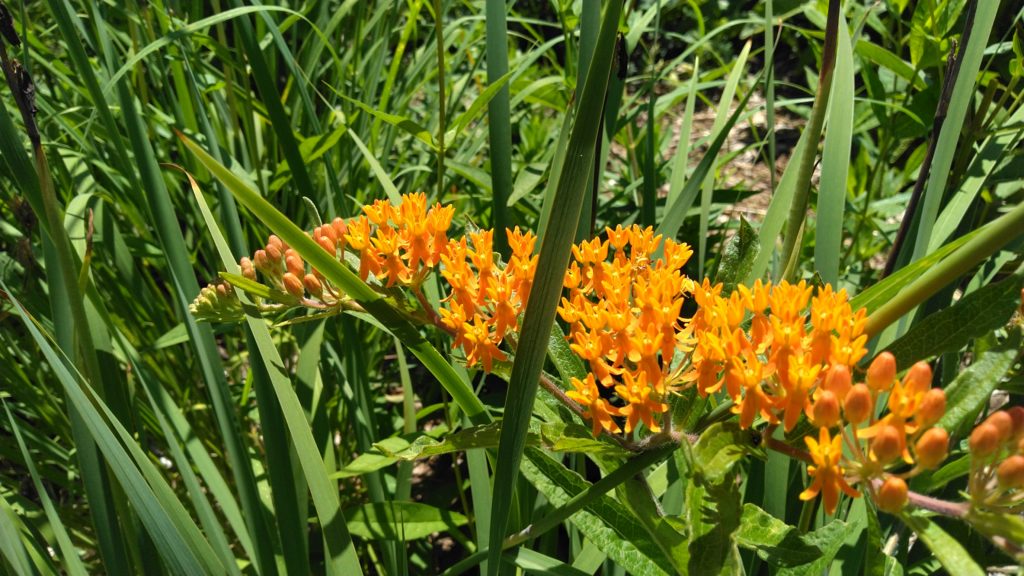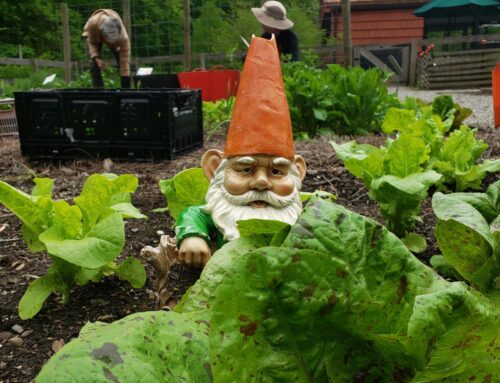Choosing a favorite spot at Tyler isn’t easy, and my favorite spots often change with the seasons. From the cool dappled shade of the forest trails in the summer to the stark clear beauty of the Pinetum in the winter, each place feels special. But no matter the season – from the high summer to deep winter – the Cistern Garden located in front of the Barn stands out for me.
Built in 1864, the cistern was the historic water storage system used by the Painter family (see Addendum). The garden begins at ground level and blankets the slope up to where the cistern has been capped with concrete. The grade change is significant and poses challenges to the type of plants that will thrive here. This also means that while the garden has a small footprint, the scale and impact is dramatic. It’s one of the first gardens people see once they leave the visitor center which is all the more important for it to provide a sweeping introduction to the historic heart of the property.
When I started at Tyler in 2017, robust and tall native meadow perennials dominated the garden, including ironweed, Vernonia glauca, goldenrod, Solidago rugosa and tall tickseed, Coreopsis tripteris. Many of these plants were volunteers from the meadows and gardens around Tyler and while beautiful, had taken over the landscape. I shifted these plants around within the garden, and edited their numbers to create a more cohesive structure that allowed the other lovely plants, including bluestar, Amsonia hubrichtii, and wild blue indigo, Baptisia australis to shine. Then I went back and augmented some plantings of Echinacea purpurea or coneflower that had already existed in the site to give it a better impact within the landscape. I also added garden phlox, Phlox ‘Jeanna’, butterfly weed, Asclepias tuberosa, and a short New England aster cultivar called Purple Dome, Symphyotrichum novae-angliae ‘Purple Dome’, to stretch the season and add color in late summer.
I chose those plants because they are tough enough to survive the conditions of the Cistern Garden — steep slope and full sun, as well as stand up to the aggressive plants already on site. I also chose them because they speak so strongly of this place. The Painter brothers, if they were to visit the cistern, would surely recognize them as the wildflowers that sprang up and grew alongside the wagon paths they used to travel between their farm fields. They are all plants that evolved to live here, and all together they create a fragment of meadow growing alongside some of the more formal plantings at the Arboretum.
It isn’t always easy to take native plants and create a truly formal garden space. Some species lend themselves well to a structured garden – phlox, blue flag iris and smooth hydrangea come to mind. But other species spring up when and where you least expect them, like ironweed, Vernonia glauca, Joe-Pye, Eutrochium sp. and goldenrod, Solidago sp. They are irrepressible and enthusiastic in the garden; uniquely American in their determination to grow however they please. It was my hope to reflect some of that determination in the Cistern Garden, to demonstrate with flowers the grit and fortitude it must have taken to live and farm this land, which seems so close to Philadelphia now but would have felt very far from civilization when the Minshall/Painter family first plowed these fields. I chose some of the species that grow in the Cistern Garden intentionally, but others I let spring up as they pleased, with just a little editing and a little cutting back and tidying to keep them from running wild. The result, I hope, is an exuberant and joyful garden that reminds us of the beauty and rarity of this corner of North America.
Stop by and see the cistern next time you visit the Arboretum. See if you can spot the brilliant red of the beebalm, Monarda didyma in July, or the dusty pink of Joe Pye, Eutrochium sp. as the season starts to lean towards fall. Even in the dead of winter when the plants have been cut back and the gardens put to bed the cistern is worth a visit.
Addendum:
The cistern was built for Minshall and Jacob Painter in 1864 by George Baker and was used to provide water for Lachford Hall, the Greenhouse and the Painter Library. Mainly constructed of stone, the cistern floor was lined with brick, and cement was used to skim the interior walls. The structure would have had a wooden house covering to keep debris out. Unlike other cisterns which were constructed to catch rain water for storage, this cistern was filled with well water. The spring houses that contained the wells were located behind Lachford Hall and at the White Cottage, which is now the Ruin Garden. To get water from the spring houses, a pump was needed. This was in all likelihood powered by horses. We estimate the size of the cistern to be 10’ deep and 12’4” to 12’8” in diameter, or approximately 9,000 gallons. Today, people use on average 80 to 100 gallons each per day.


